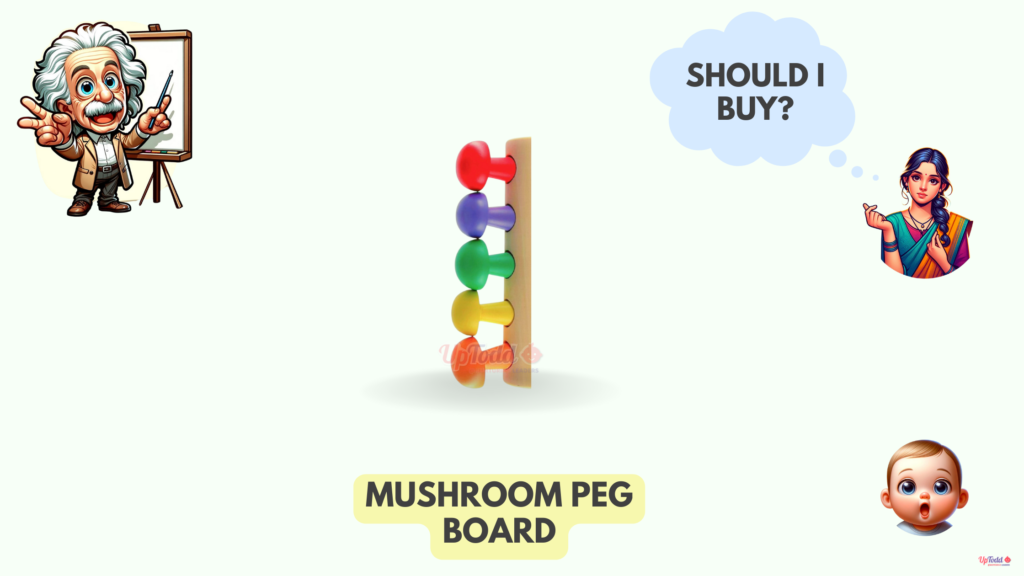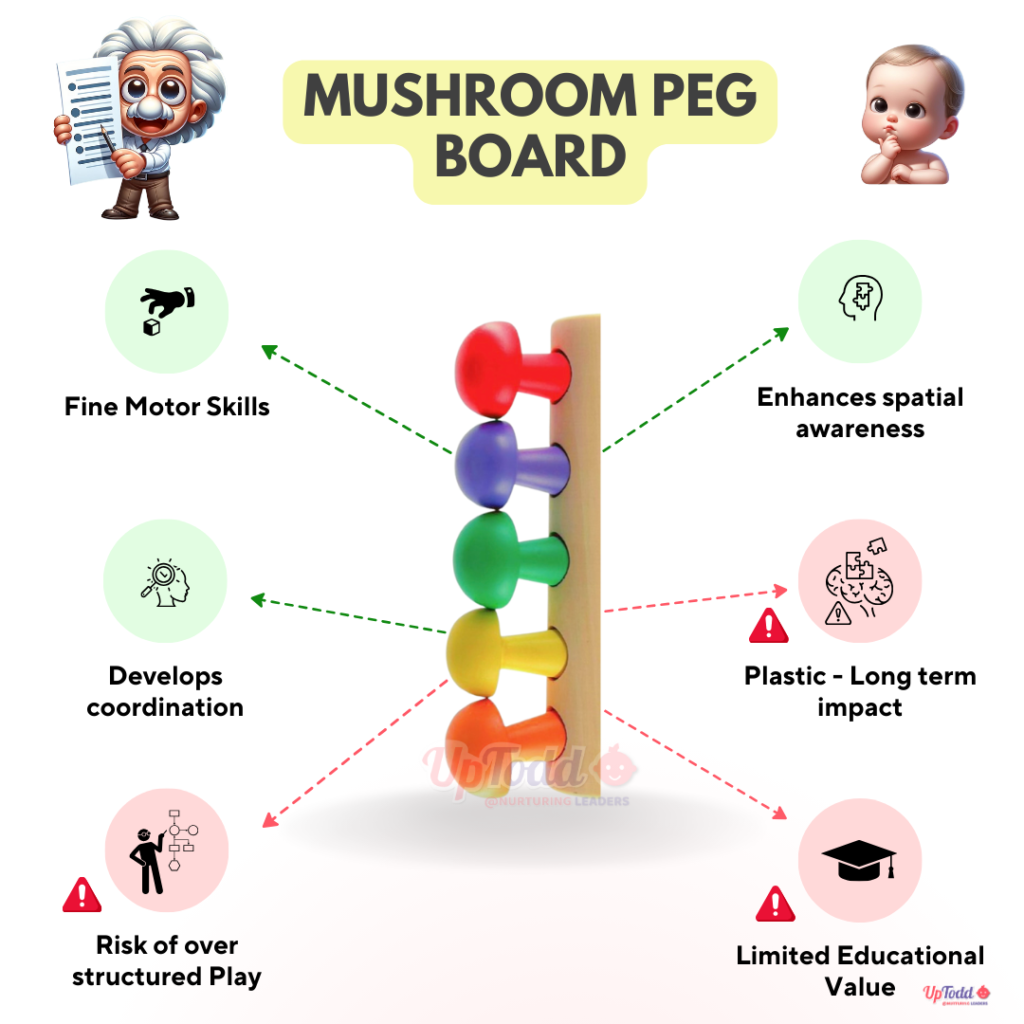
Welcome to our exploration of the Mushroom Peg Board. In this blog post, we’ll journey into the world of this engaging and developmental toy, uncovering its benefits and drawbacks. Guided by our companion, the “Einstein Guru Growth ,” let’s look at the pros and cons of the Mushroom Peg Board, empowering you to make informed decisions about integrating it into your child’s playtime.

Pros of Mushroom Peg Board
Develops Coordination
The Mushroom Peg Board is a fantastic tool for developing coordination in children. As they grasp the pegs and place them into the board, they hone their hand-eye coordination and refine their movements with precision.
Fine Motor Skills
Manipulating the pegs requires intricate hand movements, making the Mushroom Peg Board an excellent resource for fine motor skill development. Children strengthen their finger muscles and improve dexterity as they engage with the pegs.
Enhances Spatial Awareness
Through arranging and stacking the pegs on the board, children gain a heightened sense of spatial awareness. They learn about shapes, patterns, and spatial relationships, laying the foundation for more advanced spatial concepts.
Cons of Mushroom Peg Board
Plastic Long-term Impact
Some Mushroom Peg Boards are made of plastic, raising concerns about their long-term environmental impact. Parents may seek alternative materials such as wood or eco-friendly plastics to mitigate environmental harm.
Risk of Over Structured Play
When mushroom peg toys are played with by kids, specific rules or goals are usually followed by them. This might make it harder for them to explore and play freely. When playtime is too structured, creativity can be stopped, and doing things their own way by kids can be prevented.
Limited Educational Value
This toy has limited educational value because it primarily focuses on basic motor skills and hand-eye coordination rather than fostering cognitive development or teaching concepts. While it may help children develop fine motor skills, it lacks opportunities for learning shapes, colours, numbers, or letters, which are more foundational for early education.
Age Recommendations and Materials
Recommended for children aged 18 months to 48 Months, Mushroom Peg Boards are typically crafted from durable materials to withstand active play. Parents may explore alternative materials to plastic, considering factors such as sustainability and environmental impact. Supervision during play is essential to ensure safety and guide children through learning opportunities.
By actively engaging with the Mushroom Peg Board, children develop essential skills and explore the wonders of coordination, fine motor skills, and spatial awareness.
Final Thoughts BY EINSTEIN GRowTH GURU
In conclusion, the Mushroom Peg Board is a valuable asset in a child’s developmental journey, offering a blend of structured learning and imaginative exploration. While it fosters coordination, fine motor skills, and spatial awareness, caregivers should be mindful of environmental impact, limited stimulation, and the toy’s longevity as this toy has it’s own pros and cons.
Thank you for joining us on this enlightening exploration. May your child’s play be filled with wonder, discovery, and endless opportunities for growth!
Explore UpTodd luminary pathway to unleash hidden abilities of the baby
